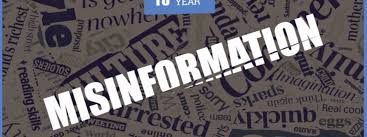There are two sources of confusion regarding the definition of PA that we at PsychLaw.net have gathered. The first is that various authors have used different terms and phrases for the phenomenon that we call “parental alienation.” Second, various authors use the term “parental alienation” to identify different, but related, behaviors.
For example, some authors use “parental alienation” to name the indoctrination and brain-washing maneuvers of the alienating parent and “parental alienation syndrome” to name the resulting mental condition of the child. Douglas Darnall (2010), for instance, wrote that a definition of PA is:
A parent’s purposeful campaign of vilification characterized by anger, resistant and inconsistent compliance with court orders, conscious or unconscious denigration of the child’s other parent, and interference with the other parent/child relationship (pp. 5-6).
Gardner (2006) made a different distinction between “parental alienation” and “parental alienation syndrome.” He said that “parental alienation” referred to all types of impaired relationship between parent and child:
[Parental alienation] can be caused by parental physical abuse, verbal abuse, emotional abuse, mental abuse, sexual abuse, abandonment, and neglect.… A child can also be programmed by one parent to be alienated from another. That particular category of parental alienation is generally referred to as parental alienation syndrome. (p. 6)
Gardner (2002) also criticized the use of “parental alienation” in court testimony as a watered-down synonym for “parental alienation syndrome.” Garrity and Baris (1994) used “parental alienation” and “parental alienation syndrome” synonymously. They wrote:
Parental alienation is very real. It occurs when one parent convinces the children that the other parent is not trustworthy, lovable, or caring – in short, not a good parent. This persuasion may be consciously malicious and intended to destroy the children’s relationship with the other parent. Or it may take a more insidious, even unconscious form arising from the personality issues as yet unresolved in the childhood of one parent (p. 66).
There are several psychosocial pathways to PA. The most common is that the alienating parent indoctrinates the child to dislike and/or fear the target parent. Although PA most often arises in the context of a dispute between the parents over the child’s custody, it can arise during the course of other types of conflicts, such as a dispute between a parent and a grandparent. Other family members – such as stepparents or grandparents – may contribute to the creation of PA. On occasion, other individuals – such as therapists and child protection workers – may cause PA to occur by encouraging or supporting the child’s refusal to have contact with the alienated parent (Hellblom Sjögren, 2012).
PA almost always arises in the context of intense conflict between the target parent and somebody else. In circumstances of persistent, passionate conflict, it is possible that a child may develop a mild level of PA even without active brain-washing by one of the parents. That is, “parental alienation without indoctrination” can occur when the child gravitates to one parent and shuns the other parent in order to remove himself from the “war zone of parental battles” (Bernet, 1995, pp. 41-46). However, a common characteristic of severe levels of PA is “intentionality.” As Sauber repeatedly asserts, it is never “unintentional,” “accidental,” or “naïve” behavior by the alienating parent that leads to a full-blown case of severe PA (Sauber, 2006).
We agree with Kelly and Johnston (2001) that PA may be caused by an interaction of several psychosocial processes. The target parent may contribute in some way to the child’s rejection. For example, the target parent may lack an involved, warm style of nurturance. He or she may have devoted insufficient time to parenting activities. However, for the diagnosis of PA, the intensity and duration of the child’s refusal to have contact with the target parent is far out of proportion to the relatively minor weaknesses in that person’s parenting skills.
Since PA usually occurs in the context of high-conflict separation or divorce, it is important to have an understanding of the meaning of “high-conflict.” That topic was extensively reviewed by Glenn Gilmour (2004) in a background paper, “High-conflict Separation and Divorce: Options for Consideration,” that he prepared for the Canadian Department of Justice. Gilmour summarized:
In short, the literature indicates that parental conflict is a major source of harm to children, whether the children are in intact families or their parents have separated or divorced. Children whose parents have separated or divorced where there is a high level of conflict between the parents display greater behavioural problems than children from low- or medium-conflict divorced families (p. 16).
Gilmour sought to arrive at a behavioral or operational definition of “high-conflict separation or divorce.” He reviewed several articles and book chapters that identified external markers of high conflict, including: a book by Johnston, Roseby, and Kuehnle, In the Name of the Child (now in its second edition, 2009); a book by Garrity and Baris, Caught in the Middle (1994); and a review by Ron Stewart, The Early Identification and Streaming of Cases of High-Conflict Separation and Divorce (2001). The features of high-conflict separation and divorce listed in Text Box 1 are based on those references.
Bernet, W. (1995).Children of divorce: A practical guide for parents, attorneys, and therapists. New York: Vantage.
This list is based on Garrity and Baris (1994), Gilmour (2004), Johnston, Roseby, and Kuehnle (2009), and Stewart(2001).
Darnall, D. (2010). Beyond divorce casualties: Reunifying the alienated family. Taylor Trade Publishing.
Gardner, R. A. (2002). PAS vs. PA: Which diagnosis should evaluators use in child custody disputes? Am. J. Family Therapy 30(2), 93-116.
Gardner, R. A. (2006). Introduction. In R. A. Gardner, S. R. Sauber & D. Lorandos (Eds.), The international handbook of parental alienation syndrome: Conceptual, clinical and legal considerations (pp. 5-11). Springfield, IL: Charles C Thomas Publisher.
Garrity, C., & Baris, M. (1994). Caught in the Middle: Protecting the Children of High-Conflict Divorce. Toronto, ON: Maxwell Macmillan Canada, Inc.
Gilmour, G. A. (2004). High-conflict Separation and Divorce: Options for Consideration. Ottawa: Department of Justice Canada (2004-FCY-1E).
Hellblom Sjögren, L. (2012). Barnet avskiljs från sina föräldar, omhändertas jml LVU och påverkas att ta avstånd från dem båda (The child is separated from its parents, taken into forced custody and is influenced to reject them both)(Swedish). In: Barnets rätt till familjeliv: 25 svenska fallstudier av föräldraalienation (The Child’s Right to Family Life: 25 Swedish Case Studies of Parental Alienation), pages 339-376. Lund, Sweden: Studentilleratur.
Kelly, J. B., & Johnston, J. R. (2001). The Alienated Child: A Reformulation of Parental Alienation Syndrome. Family Court Review, 39, 249-266
Sauber, S. R. (2006). PAS as a Family Tragedy: Roles of Family Members, Professionals, and the Justice System. In R. A. Gardner, S. R. Sauber & D. Lorandos (Eds.), The International Handbook of Parental Alienation Syndrome: Conceptual, Clinical and Legal Considerations (pp. 12-32). Springfield, IL: Charles C Thomas Publisher.















